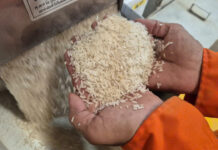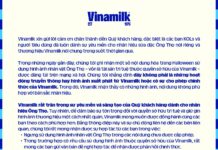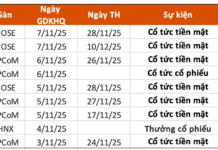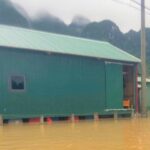As heavy rains caused severe flooding in many mountainous regions, residents of the “flood basin” of Tan Hoa in Quang Binh province calmly moved into floating houses.
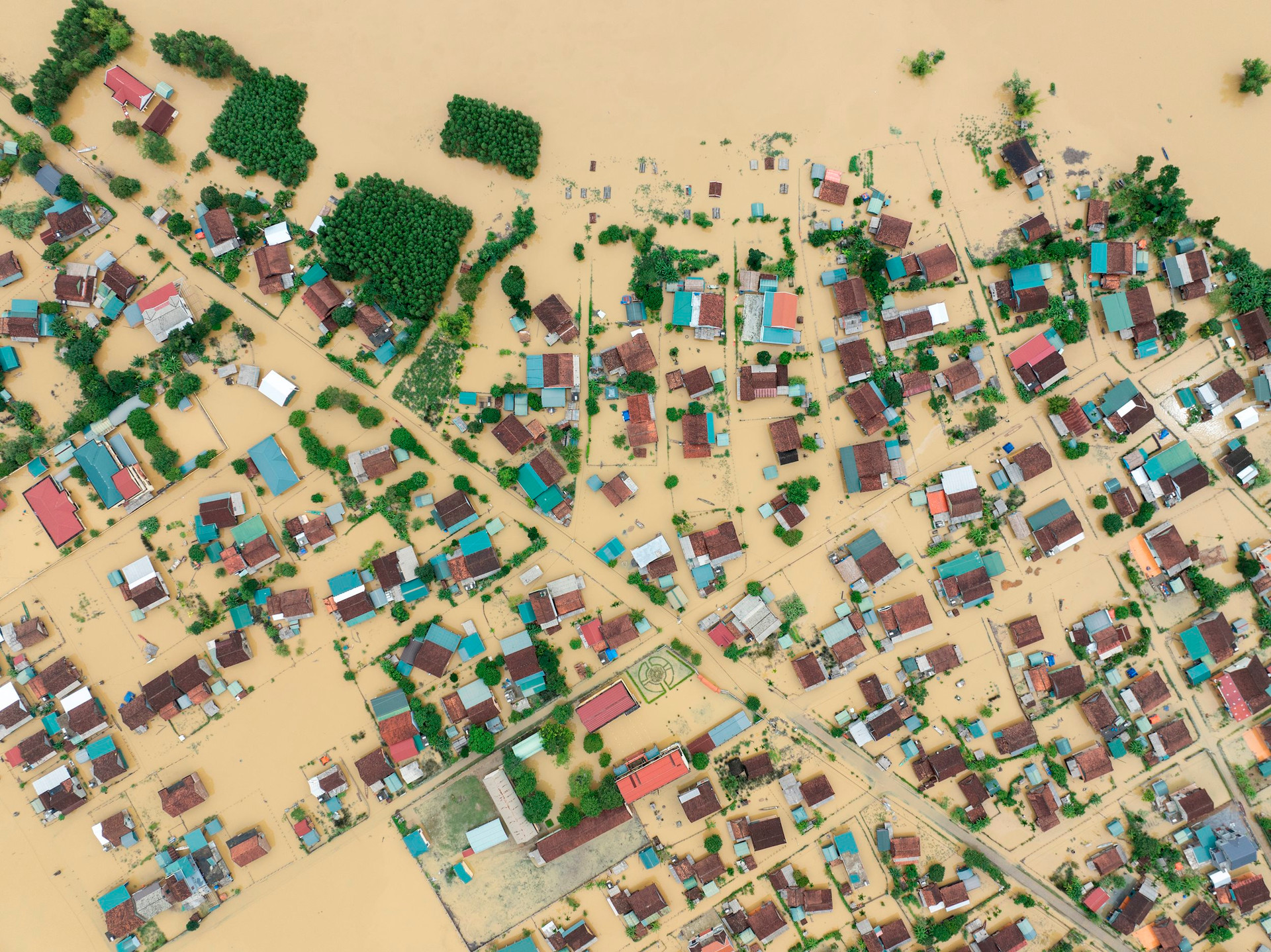
Tan Hoa Village submerged in floods, seen from above
These floating houses, approximately 20 square meters in size, are made of wood or corrugated iron and equipped with a system of tightly fastened barrels underneath, allowing them to float on the water as flood levels rise. The floating houses are anchored to 5-7 meter high positioning poles to prevent them from drifting away. Inside, the residents store enough food and supplies to last their families from two weeks up to a month.
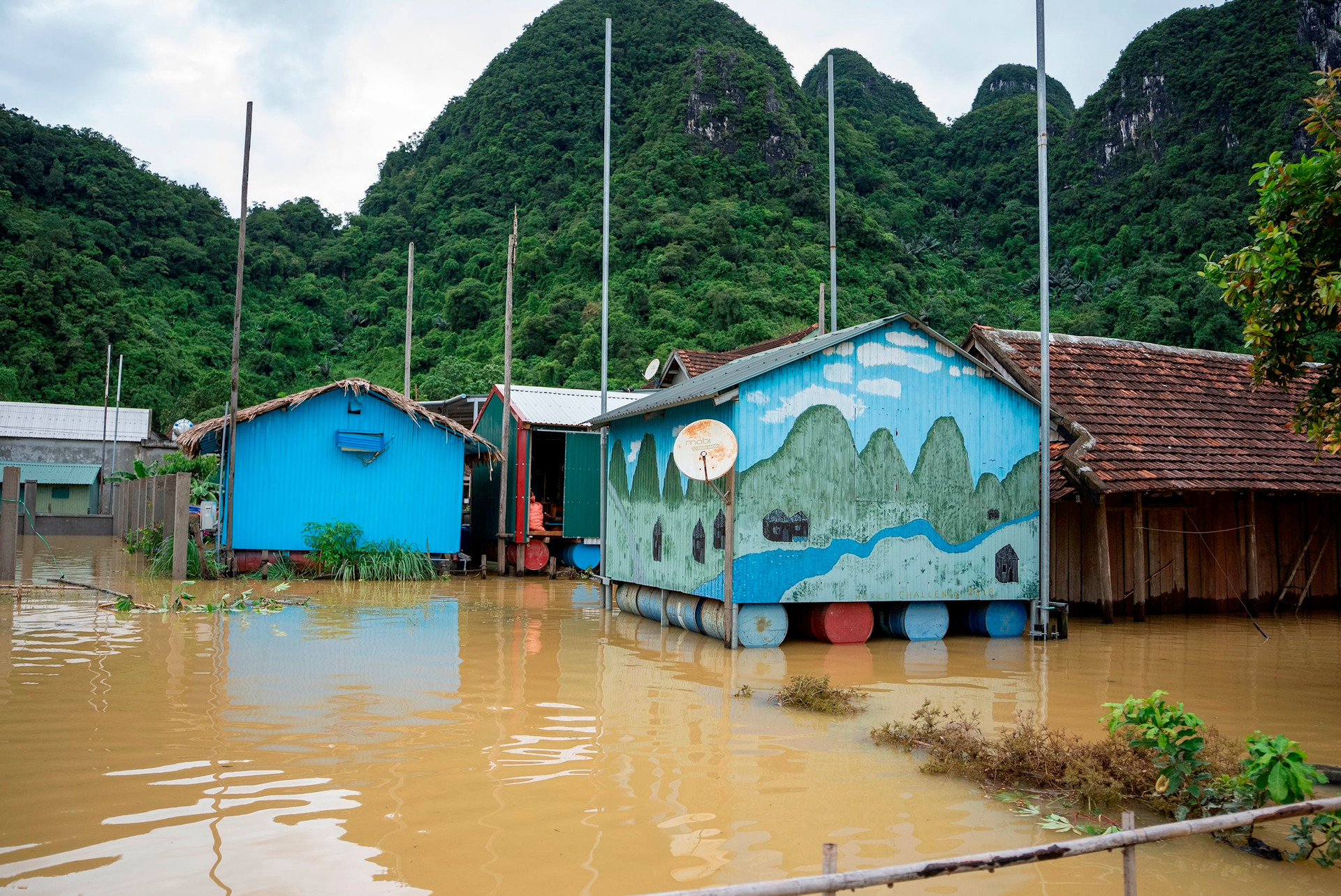
Floating houses in Tan Hoa, Quang Binh
For transportation within the village, the residents use wooden boats or floats. Meanwhile, their buffaloes are moved to higher ground, and the villagers row boats daily to cut grass for their buffaloes.
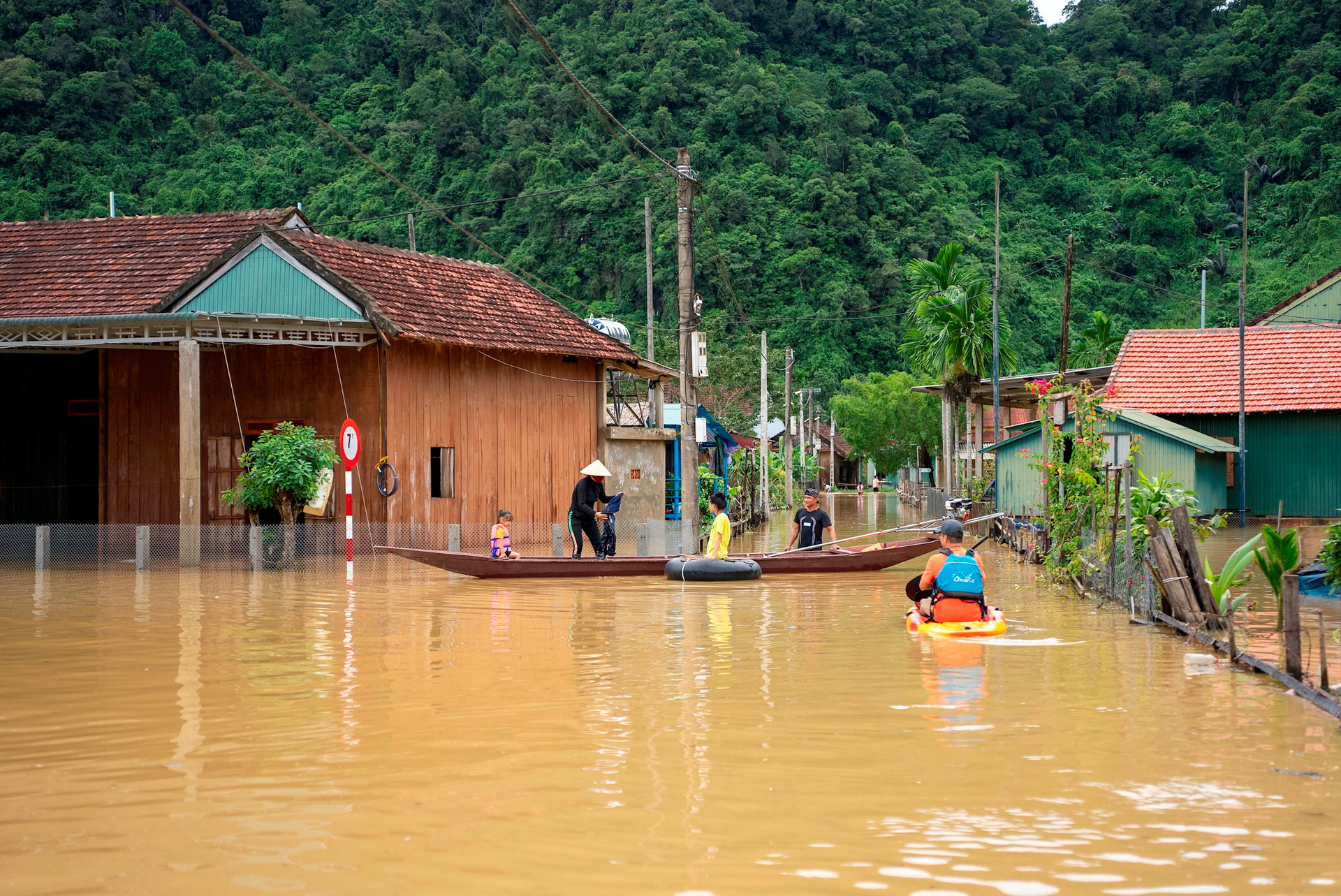
Villagers using wooden boats or floats for transportation
The idea of floating houses in Tan Hoa emerged around 2010, following a devastating flood. Today, there are over 700 floating houses out of more than 715 households in Tan Hoa. Among these, 90 houses, worth a total of 3 billion VND, were sponsored by the “Tú Làn Challenge” race organized by Chua Me Dat One-Member Co., Ltd. (Oxalis).
As the floodwaters rise, so do the floating houses. The residents no longer have to flee to the mountains for shelter, leaving their homes and possessions to be swept away by the currents.
Mr. Nguyen Chau A, CEO of Oxalis, stated that the people of Tan Hoa can go to the nearby Tú Làn Lodge (Oxalis’ accommodation facility) to access clean water, charge their phones, and even seek shelter during floods if necessary.
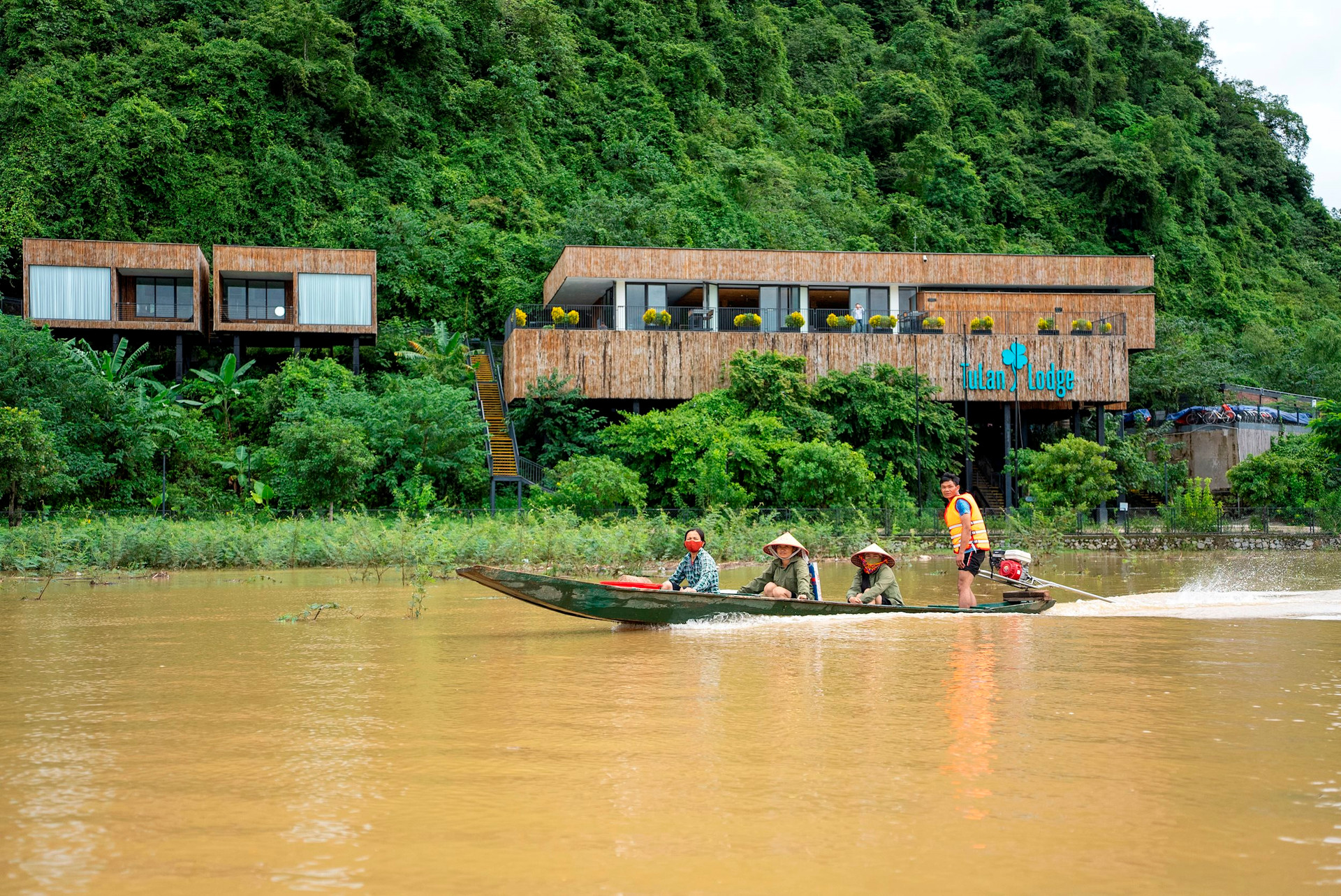
Tú Làn Lodge – where villagers can access clean water, charge their phones, and seek shelter during floods
However, the significance of these floating houses goes beyond mere flood protection. They have become a unique feature of Tan Hoa, rarely seen elsewhere. Oxalis conceived and implemented the idea of developing a flood season experience tourism model in Tan Hoa, offering a promising new direction for the region’s economic growth.
Visitors to Tan Hoa can safely experience the flood season by staying in floating houses, fishing, kayaking through the floods and streams to explore caves, admiring the flooded landscapes, and immersing themselves in the local way of life.
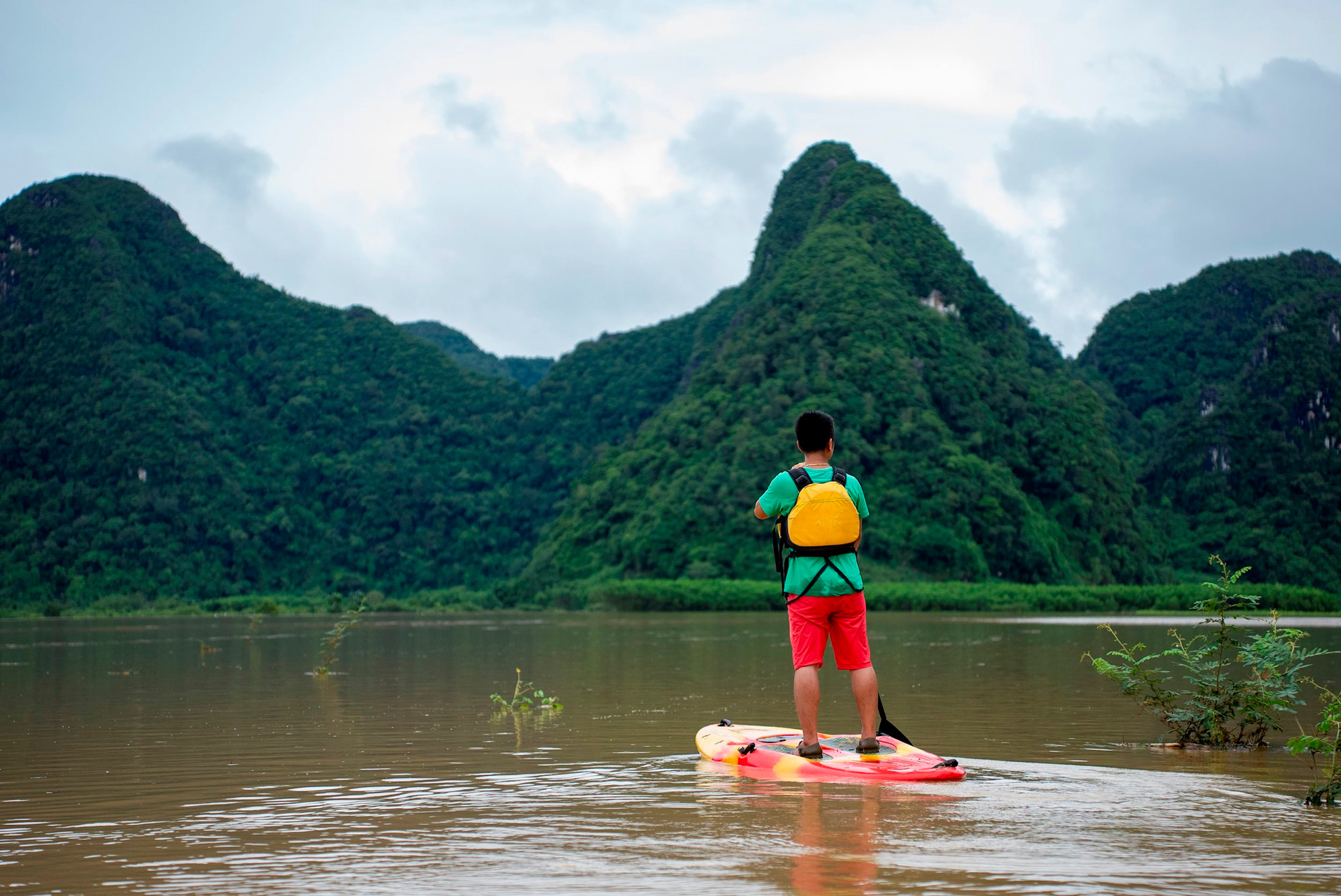
Tourists experiencing flood season tourism
Oxalis has also collaborated with the Quang Binh Department of Tourism to launch the Tú Làn Lodge resort and an ATV off-road driving tour to explore the Tan Hoa lim forest. During the flood season, visitors to Tan Hoa will travel to Tú Làn Lodge by boat and then proceed to the village by kayak or SUP. Even when the water levels rise, the homestay dining services remain operational. Instead of cycling to dinner at a local homestay, guests now kayak to their dinner destination.
Currently, Tan Hoa has 10 homestays built on floating houses, which can accommodate guests during flooded periods. These homestays are equipped with self-contained septic tanks that function normally even when the water levels rise.
This is how Tan Hoa develops tourism while adapting to the weather.
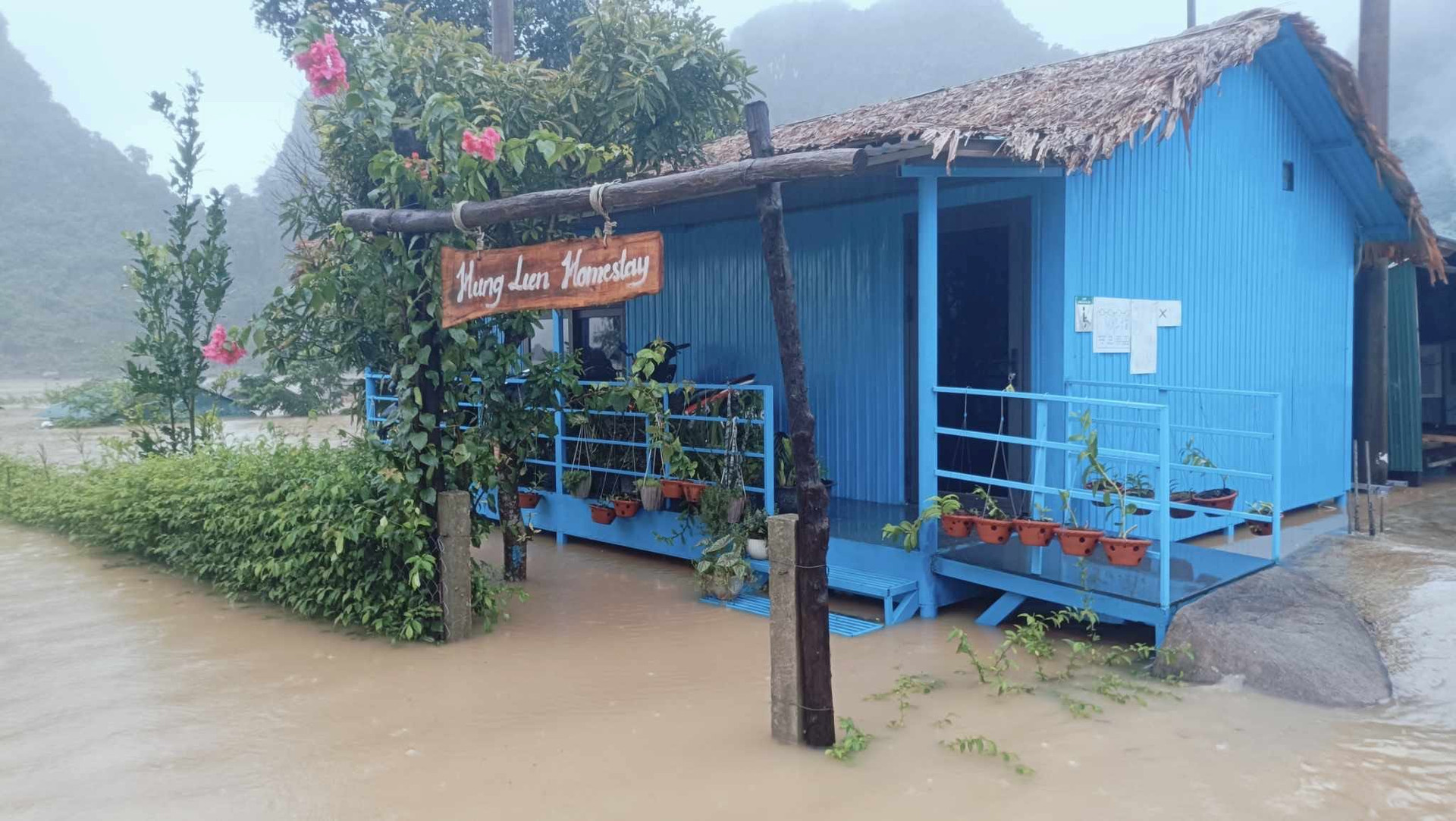
A homestay on a floating house in Tan Hoa
“While it is true that floods pose challenges, Tan Hoa cannot escape annual flooding, and neither can our business. We strive to adapt to weather conditions to ensure our operations continue,” said Mr. Chau A.
According to Oxalis’ data, in the first eight months of 2024, the company welcomed over 9,600 tourists to Tan Hoa, generating a revenue of 39 billion VND (excluding taxes). Specifically, the Tú Làn tour attracted 5,300 visitors, contributing more than 25 billion VND in revenue.
As a result, Oxalis contributed nearly 6 billion VND to the local budget, and the villagers of Tan Hoa earned nearly 9 billion VND from Oxalis’ business activities. The porter team alone earned 4.5 billion VND.
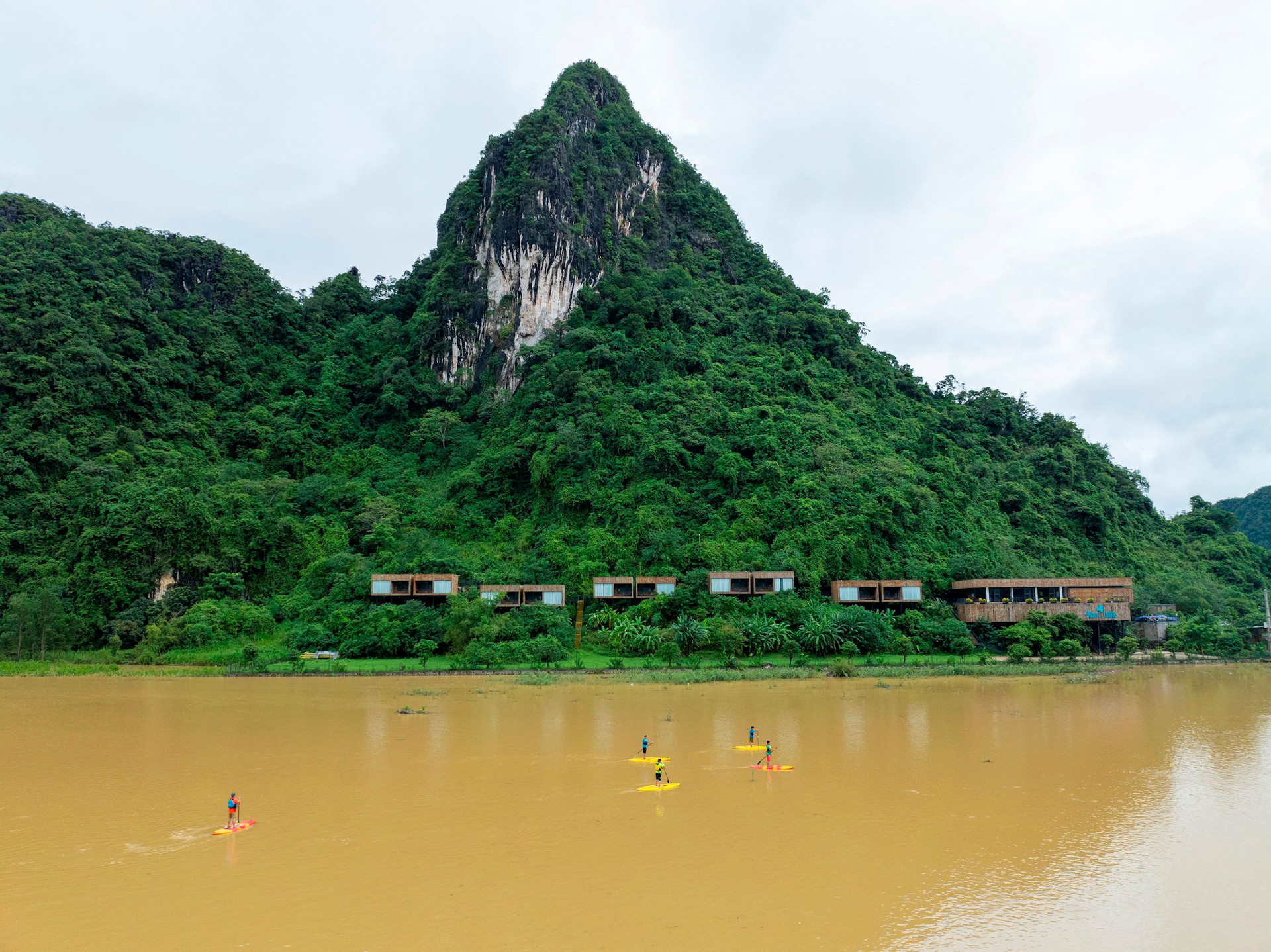
Tourists enjoying the flood by SUP boarding
With climate change impacting the globe and extreme weather events becoming more frequent, the tourism industry faces disruptions due to unpredictable weather conditions. Therefore, it is imperative for businesses in this sector to adapt and implement solutions to prepare for extreme weather events promptly.
If the market embraces the adaptive tourism model in Tan Hoa, it can be replicated in other areas.
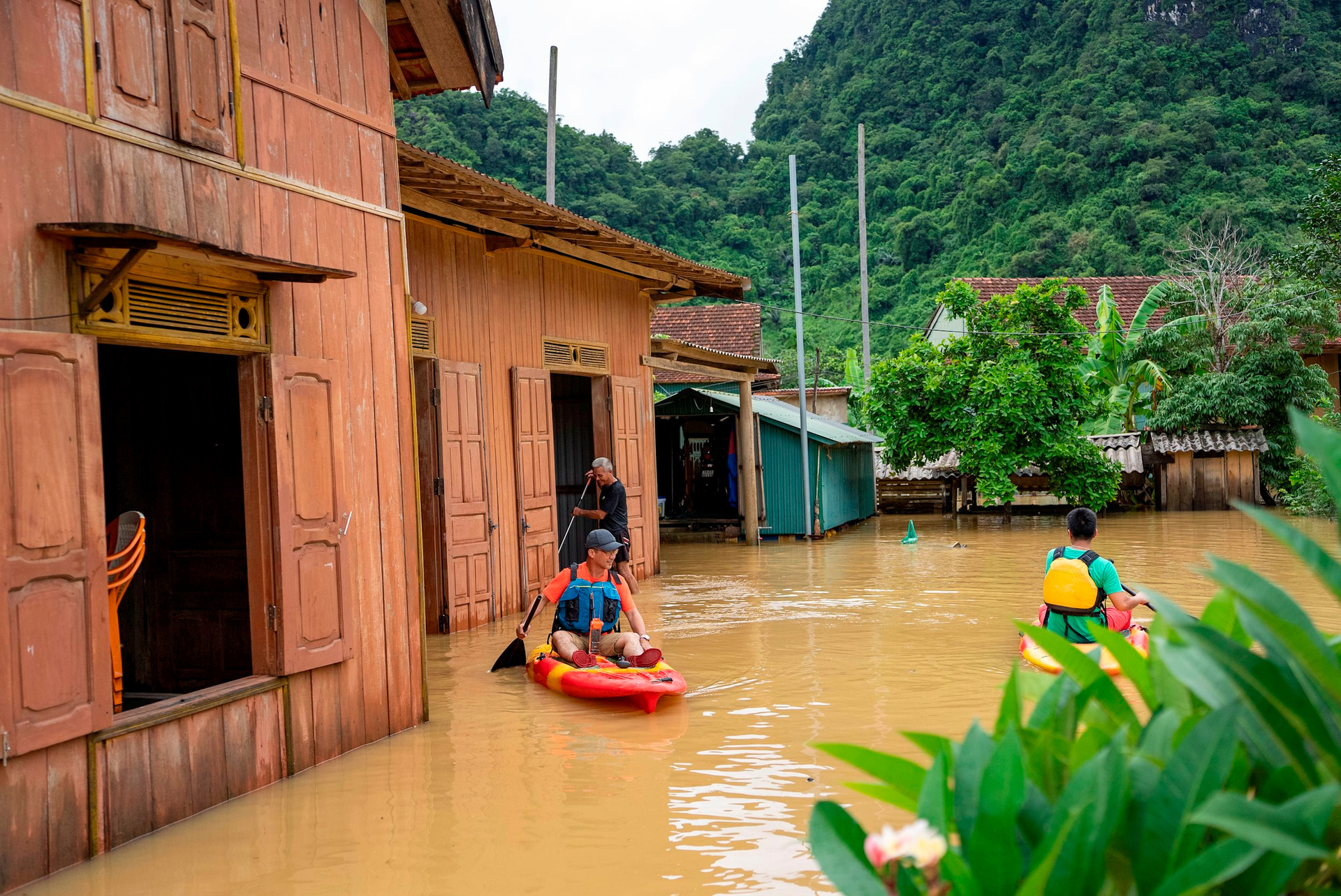
Tourists paddling SUP to visit the locals
However, according to Mr. Chau A, weather-adaptive tourism is not just about adapting to the flooded season but also about embracing all seasons. When the locals become accustomed to flooding and learn to adapt, floods become a normal part of life. By establishing a weather-adaptive tourism industry, Tan Hoa can accommodate guests at any time, regardless of weather conditions.
“Of course, during high water levels, most tourists prefer to go elsewhere. Only a few adventurous souls seek out the unique experience of visiting a flooded region. But we want people to perceive flooding in Tan Hoa as a normal occurrence, and once the waters recede, everything quickly returns to normal,” emphasized Mr. Chau A.


